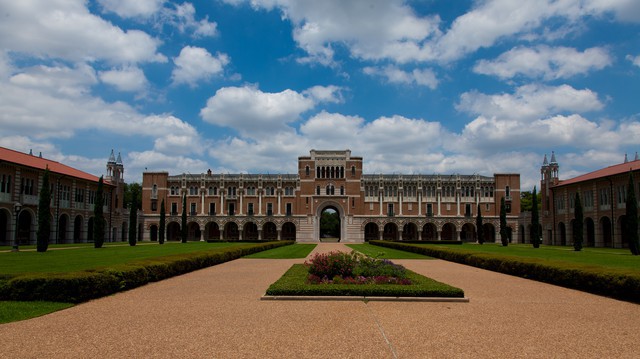The Allure of US Universities

American universities are some of the most prestigious and respected universities in the world. According to the Times Higher Education Ranking 2020, 61 of the top 200 universities in the world are in the US. Of those, 14 are in the top 20. There are several reasons for this. The top American universities all maintain a very high academic standard, constantly working to provide the best learning experience for all students attending their university. They also all have very high admission requirements to ensure that only the best students get in, causing some institutions such as Harvard to have an acceptance rate of 4.6% (for the class of 2020-2023 according to their website). Another factor is their funding. Unlike European universities where almost all are public, a large percentage of American universities are private, meaning that they have large funds available which can be used to build facilities, conduct research, and finance student scholarships. Finally, another reason is simply the sheer quantity of universities in the US. Although the actual number is debated (depending on the source you get values between 1400 and 4000 universities) what is universally acknowledged is that there are a large amount, especially when compared to some other countries with a very good higher education (the UK has about 130 universities).
How do they differ?
One of the main differences between the US and Europe is the approach they take towards getting a degree. In Europe, you apply to study a subject, and spend three years studying it in ever greater detail. This creates a profound understanding of that subject. In the US, the universities attempt to encourage you to pursue a much more rounded education. You don’t apply to study a subject, but to study at the university. Once there, you are encouraged to take a broad range of subjects. You then pick your major as late as the end of your second year (depending on the university). Even after you pick a major, you can still take classes outside of your subject and many students get a minor (a secondary academic discipline) in something completely unrelated. Because the system focuses on the breadth of your education, the course generally takes four years instead of three, like in Europe.
As mentioned above, because of the large amount of universities in the US, there can be very different classroom environments, ranging from small classes of twenty students at small liberal arts colleges to lectures with a couple of hundred people at large state universities. One thing that stays constant is the work, and more importantly, the type of work. In the US there are lots of papers, assignments, readings, and tests set by the professor. This allows the professor to see how you’re doing and can then help you if you’re struggling (this depends on the size of your class). It also gives you more room for error as your final grade isn’t based solely on your exams, but also on work done during the semester. This is not the case in other countries (e.g. the UK) where your final grade could rely entirely on one exam.

Students in American universities are also provided with support and resources to ensure that students are capable of learning to the best of their abilities. Students are provided with support structures such as a campus police force, medical centers, mental health counseling, support groups etc. Students are also provided with a multitude of extracurricular activities, from athletic facilities to a myriad of student-run clubs and organizations. In addition, depending on which school you go to, athletics can be a big part of your social life (such as going to watch the football game), especially at large state universities where the athletes are elite players who often go on to play professionally. This type of culture does not exist in Europe and is unique to the US. Students are encouraged to live on campus, and there are many dining options on campus. All this is done to create a connected community where students can feel comfortable and safe while learning.
…and the expense?

All of this comes with a price. The prices of American universities are inordinately large, due partly to the fact that a lot of the top universities are private, and that the state does not regulate the prices. However, the prices do differ depending on whether you’re going to a public or private university, whether you’re a domestic or international student, and a variety of other factors. This can be seen in the bar chart on the right. Nor do these prices consider scholarships which adds another level of complexity.
Philip Von Koppenfels / S7EN / EEB1 Uccle
Images : commons.wikimedia.org, tendenci.com, flickr.com, research.collegeboard.org





Very interesting article!!